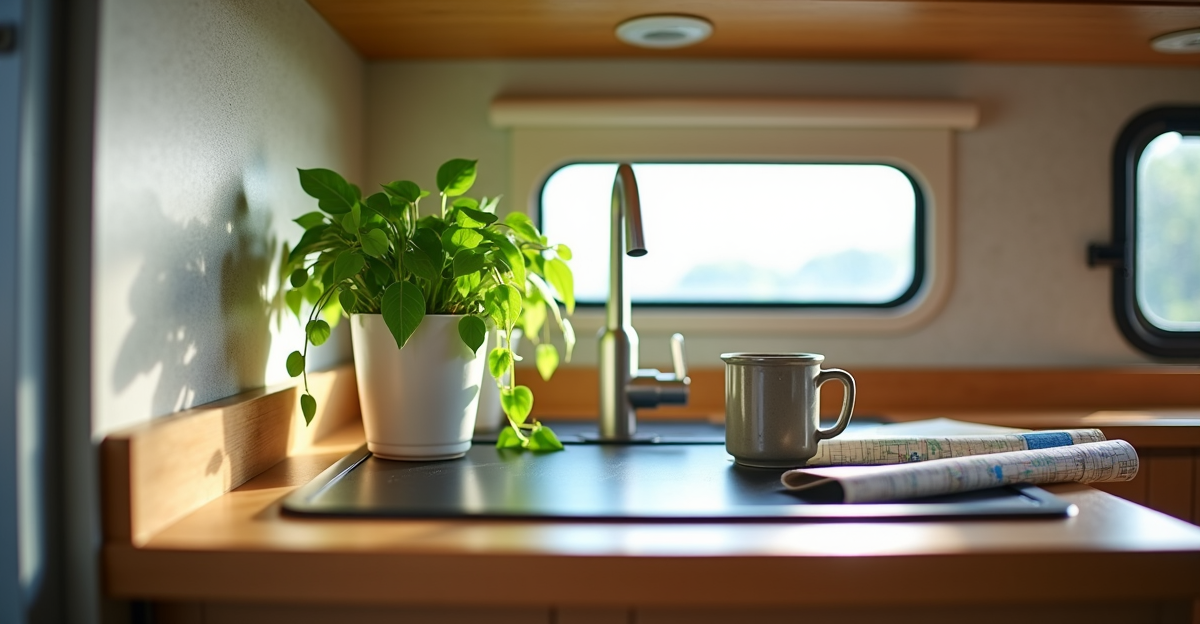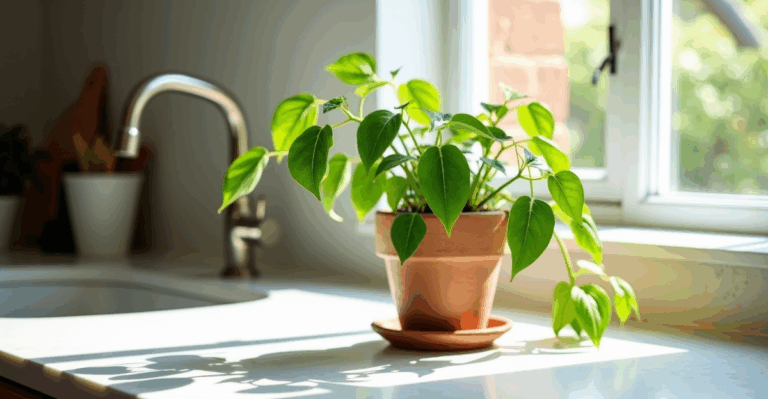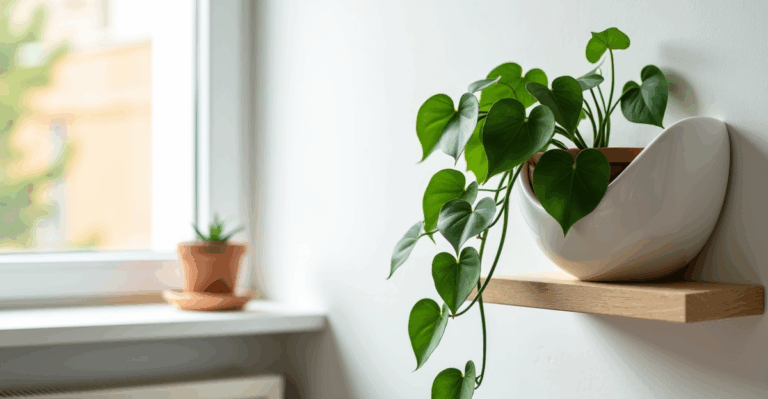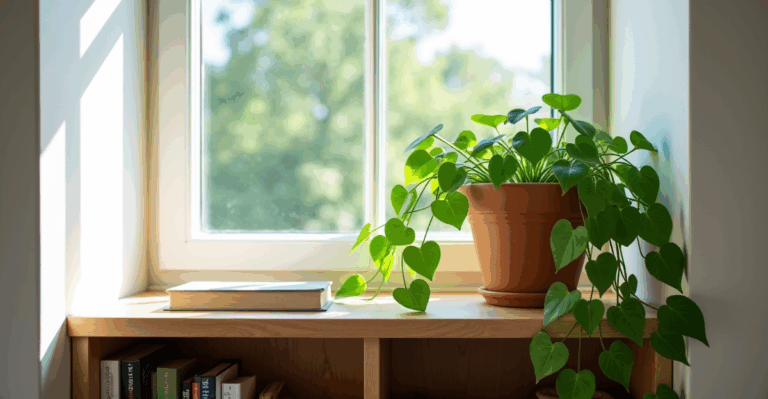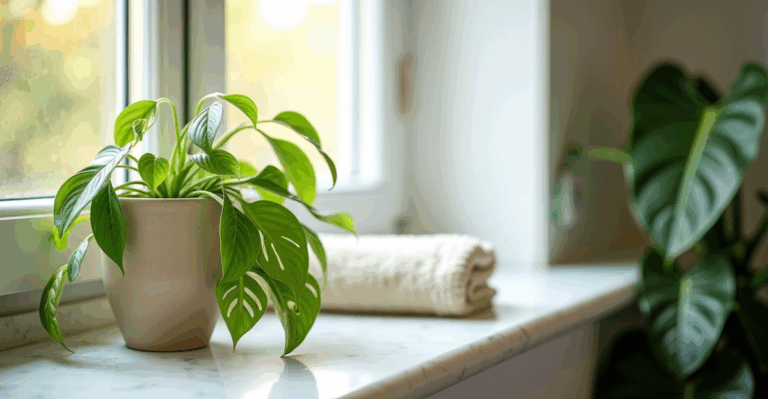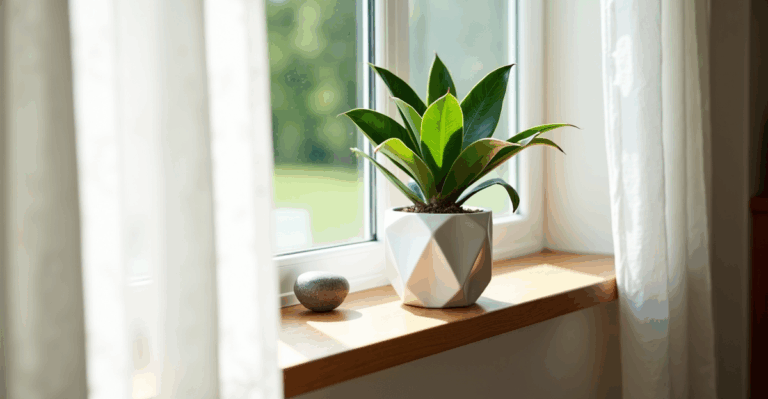Tucked Between Your Coffee Maker and Travel Mug: Styling Pothos on an RV Shelf (Pet-Safe & Practical)
You’ve finally got that perfect spot: a narrow shelf above your RV sink, catching the gentle morning light from the small window, framed by your favorite travel mug and a well-worn map. Now, you want to soften the hard edges with a trailing pothos. But there’s a catch: your curious cat, Marmalade, loves to curl up right there. You’ve heard pothos is toxic, and you don’t want a trip to the vet mid-adventure. You also know RVs are tricky—bumpy roads, temperature shifts, and that weird way indoor light behaves. How do you make it look effortless, keep it healthy through the miles, and keep Marmalade safe? We’ve been there too. It’s about balancing practical care with intentional style, not just stuffing a plant in a corner.
Why Pothos? The RV-Ready Choice
Pothos (Epipremnum aureum) is the unsung hero of mobile living. It thrives in the variable light of RV windows (often east or north-facing), tolerates occasional dry spells (perfect for when you’re on the road without a water source), and its long, trailing vines create instant softness. Crucially, it’s not a high-risk plant for pets if you manage its placement. While ingestion can cause mild oral irritation (not life-threatening like lilies), keeping it out of direct reach—like trailing over the shelf edge instead of sitting on it—is a simple, effective safety step. We’ve seen countless RVers use pothos to transform sterile shelf spaces into living, breathing corners. It’s resilient, forgiving, and looks beautiful when given just the right conditions.
Fixing the “I Watered My Pothos and It Died” Myth
Most people overwater pothos because it looks healthy when leaves are glossy, but the real sign of drowning is yellowing lower leaves or mushy stems. In an RV, this gets worse: the close quarters mean less airflow, and the movement can compact soil, slowing drainage. We’ve found the key is not a strict schedule, but understanding your conditions.
– East-facing window? Water when the top 2–3 inches of soil feel dry (usually every 7–10 days).
– North-facing, low light? Wait until the top 3–4 inches are dry (every 10–14 days).
– RV movement? Avoid watering right before a trip—soil holds moisture longer when stationary.
Why it works: Trailing vines mean most roots are in the upper soil, so they dry out faster than a root-bound plant in a deep pot. A simple finger test beats a calendar.
Styling for Small Spaces (Without Sacrificing Health)
Your RV shelf is tight—no room for big pots or awkward arrangements. The magic is in intentional placement and using the plant’s natural growth.
– The Edge Trick: Place your pothos pot slightly off-center on the shelf edge, so the vines cascade down the front (not the back). This creates visual depth and keeps the leaves above the shelf surface where Marmalade can’t reach them.
– Pair with Purpose: Add a small, low-maintenance companion like a spider plant (also pet-safe) in a smaller pot on the shelf’s inner side. Its upright leaves contrast the pothos’ flow, making the shelf feel layered without clutter.
– Surface Protection: Use a thin, decorative tray (like a woven mat or ceramic saucer) under the pot. This catches drips without hiding the plant’s roots (which need to breathe), and it keeps the shelf looking intentional.
Real RV Example: We helped a friend style a shelf above a tiny sink. She placed a 4-inch pothos in a simple white ceramic pot (with drainage holes!) on the outer edge. Vines flowed down the front, past a tiny terracotta succulent (also safe for cats) on the shelf’s inner edge. The tray caught water, and Marmalade stopped trying to climb up.
Pet Safety: Beyond Just “Don’t Let Them Eat It”
Toxicity isn’t the only concern—pets often chew on plants out of boredom. We prioritize placement over punishment:
1. Trailing > Upright: Pothos vines naturally grow downward. A trailing plant on a shelf edge is far less accessible than a bushy plant sitting on the surface.
2. Height Matters: Put the pot on the shelf, not on the floor near the cat bed. Even a small shelf (6-8 inches high) makes a difference.
3. Distract, Don’t Punish: Keep Marmalade’s favorite chew toy right next to the shelf. A quick “Look at this!” redirects without stress.
Edge Case: If your pet does chew a leaf, gently remove the plant, rinse the cat’s mouth with water, and monitor for drooling or vomiting. It’s rare to need a vet, but it’s better to be prepared.
Seasonal Shifts & RV Quirks
RVs change with the seasons (and your location!), so your pothos care must too.
– Winter (Heated RVs): Dry air from heaters slows soil drying. Water less often—wait until the top 3 inches are dry. A small humidifier near the shelf (not on it) helps without making the pot soggy.
– Summer (Hot, Sunny RVs): Sunlight through windows can scorch pothos. If leaves get brown spots, move the pot away from the window slightly or use a sheer curtain.
– Road Trips: Water before you leave and after you arrive. Avoid watering mid-trip—soil stays wet longer when stationary, increasing root rot risk.
Trade-off to Know: Pothos grows faster in summer. You’ll need to trim vines more often to keep them flowing over the shelf, not onto it. It’s a small chore for big visual payoff.
Avoiding Common RV-Specific Pitfalls
– Self-Watering Pots? Skip them. RV movement jostles the reservoir, causing uneven watering and root rot. Stick to standard pots with drainage.
– LECA? Not ideal for small shelves. It’s great for bigger setups but adds bulk. Pothos in soil (with perlite) is lighter, easier to move, and fits better.
– Moss Poles? Overkill for a small shelf. Pothos trails beautifully without support—focus on the direction of the vines, not vertical growth.
– Over-Spraying: RVs have limited air exchange. Mist leaves? Only if the room is well-ventilated and you use a spray bottle with a fine mist. Otherwise, it breeds mold.
The Final Touch: Making It Feel Like Yours
Style isn’t about perfect symmetry—it’s about intention. Let a few vines drape slightly unevenly for organic movement. Add a tiny, smooth river stone on top of the soil (not in the pot!) to anchor the look. Keep the shelf clear of other objects—just the pot, the trailing vines, and maybe one small companion plant. The simplicity makes the pothos the star, and that’s what matters. In an RV, where space is sacred, every item must earn its place.
Why This Works (And Why It’s Not Magic)
This isn’t about buying fancy gear. It’s about seeing your space clearly—the light, the movement, the cat—and adjusting care to fit. Pothos is forgiving, but it still needs the right conditions. By placing it where it can grow naturally (trailing over the edge), watering based on actual soil moisture (not a guess), and keeping it safely out of reach, you create a living piece of your journey. It’s not about perfection; it’s about a plant that thrives with your life, not against it.
Key Takeaways
– Water pothos when the top 2–3 inches of soil are dry (less often in low light/dry winter air).
– Place the pot off-center on the shelf edge to let vines cascade down and stay out of reach.
– Keep it simple: one trailing pothos, a small companion plant, and a protective tray.
When you’re ready to grow your setup, explore our 3D-printed planters.

